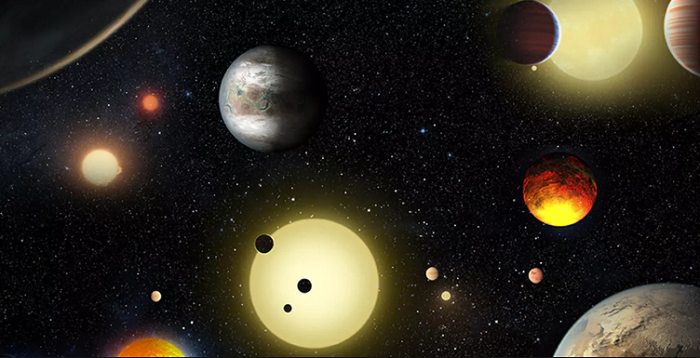Want to travel far away? Check out NASA’s discoveries of worlds beyond the Solar System

January 8: Going beyond Earth? No. It is still too close. NASA is working on exploring worlds that are beyond the solar system. NASA’s Transiting Exoplanet Survey Satellite (TESS) has found three confirmed exoplanets, or worlds beyond our solar system, in its first three months of observations.
The new discoveries show that TESS is delivering on its goal of discovering planets around nearby bright stars.
TESS’s four cameras were designed and built by MKI and MIT’s Lincoln Laboratory in Lexington, Massachusetts. The primary aim is to look for exoplanet transits, which occur when a planet passes in front of its host star as viewed from TESS’s perspective. This causes a regular dip in the measured brightness of the star that signals a planet’s presence. In its primary two-year mission, TESS will observe nearly the whole sky, providing a rich catalog of worlds around nearby stars.
The first confirmed discovery is a world called Pi Mensae c which is about twice the size of Earth. Every six days, the new planet orbits the star Pi Mensae, located about 60 light-years away and visible to the unaided eye in the southern constellation Mensa. The bright star Pi Mensae is similar to the Sun in mass and size.
Next planet is called LHS 3884b. It is a rocky planet about 1.3 times the size of Earth, located about 49 light-years away in the constellation Indus, making it among the closest transiting exoplanets known. The star is a cool M-type dwarf star which is about one-fifth the size of our Sun. Interesting fact is, completing an orbit every 11 hours, the planet lies so close to its star that some of its rocky surface on the daytime side may form pools of molten lava.
The third planet orbits HD 21749 which is a K-type star about 80% the mass of Sun and located 53 light-years away in the southern constellation Reticulum. The confirmed planet, HD 21749b, is about three times the size of Earth and 23 times its mass. It orbits every 36 days, and has a surface temperature around 150 degrees Celsius.
Using ground-based telescopes, astronomers are now conducting follow-up observations on more than 280 TESS exoplanet candidates.
The mission’s sensitive cameras also captured 100 short-lived changes, most of them likely stellar outbursts, in the same region of the sky. They include six supernova explosions whose brightening light was recorded by TESS even before the outbursts were discovered by ground-based telescopes.
What is even more exciting, the system holds hints of a second candidate planet about the size of Earth that orbits the star every eight days. If confirmed, it could be the smallest TESS planet to date.